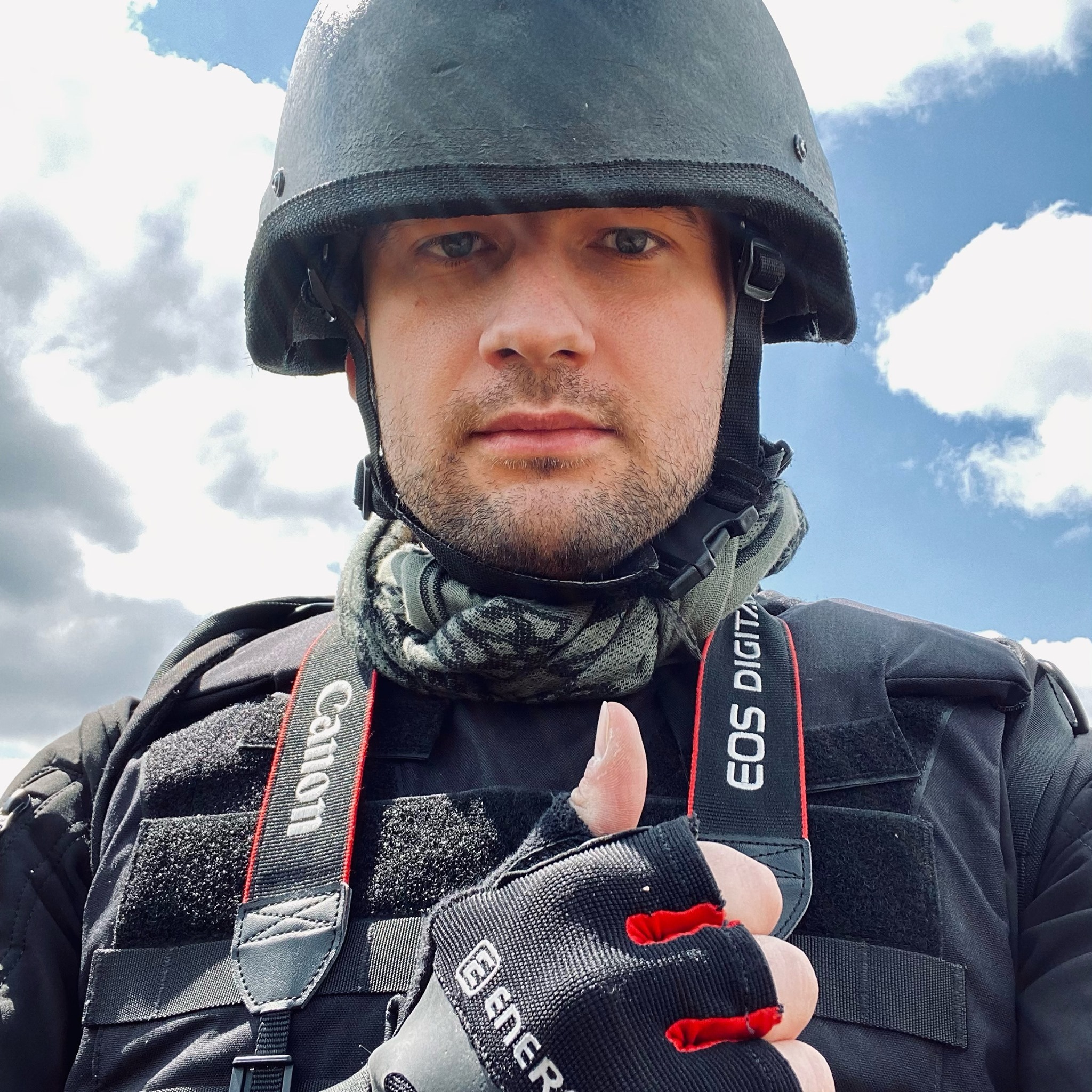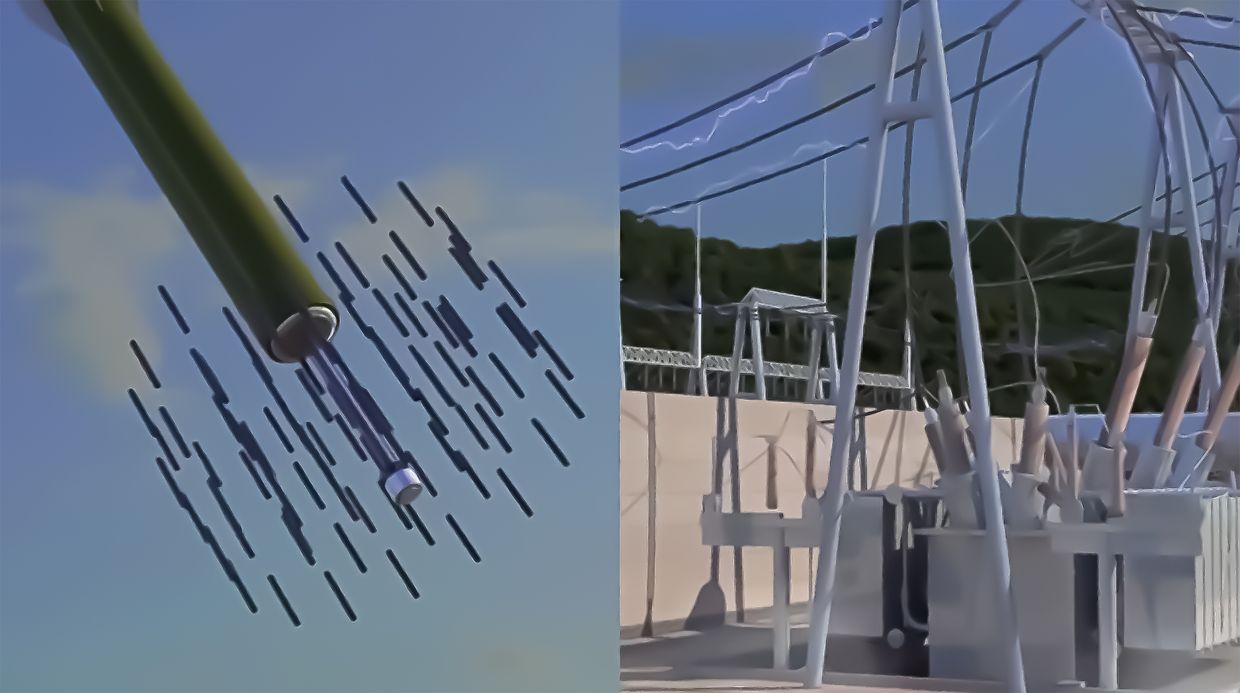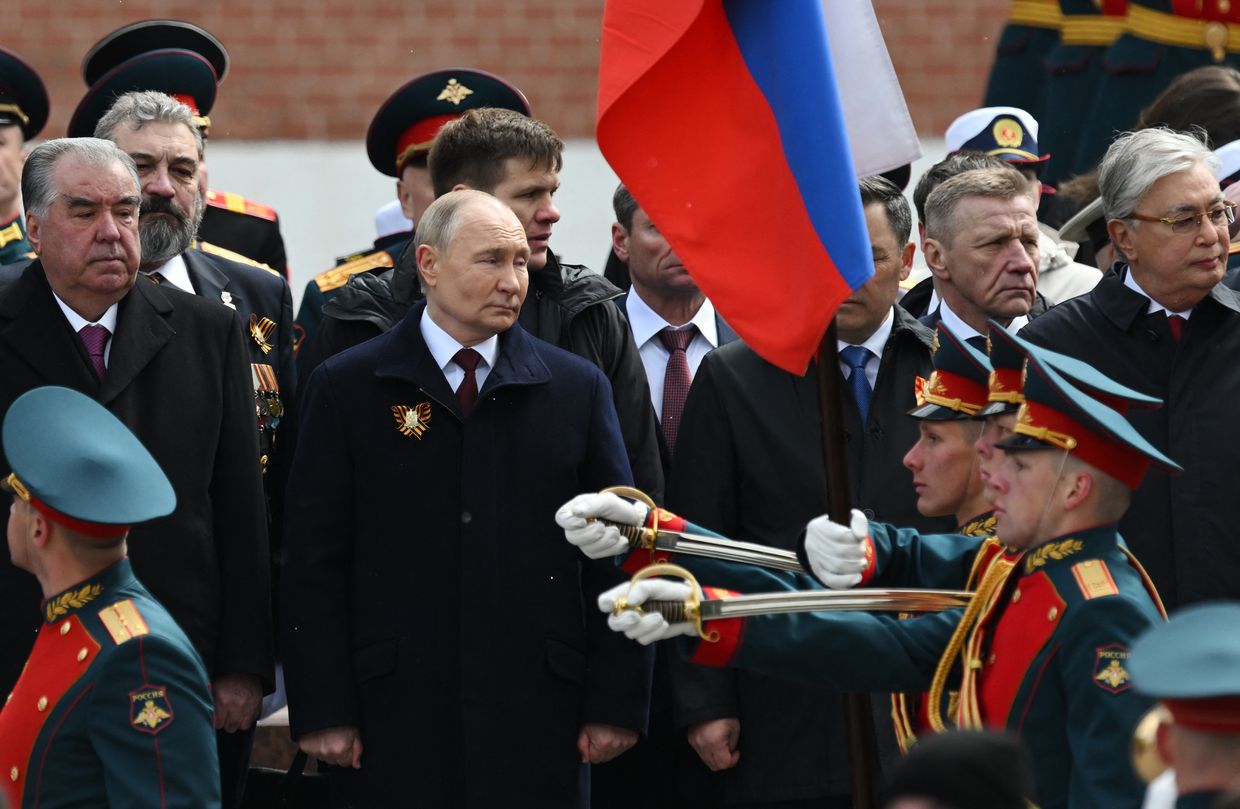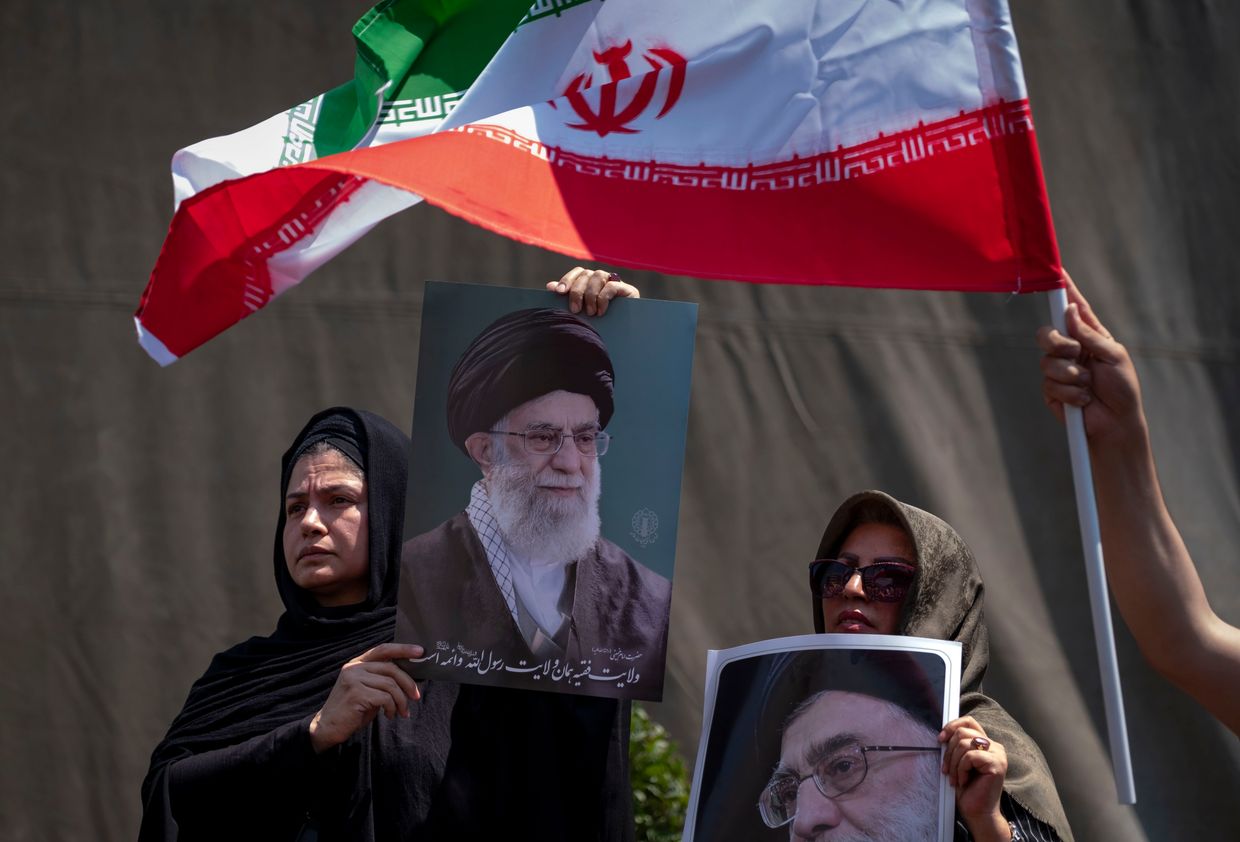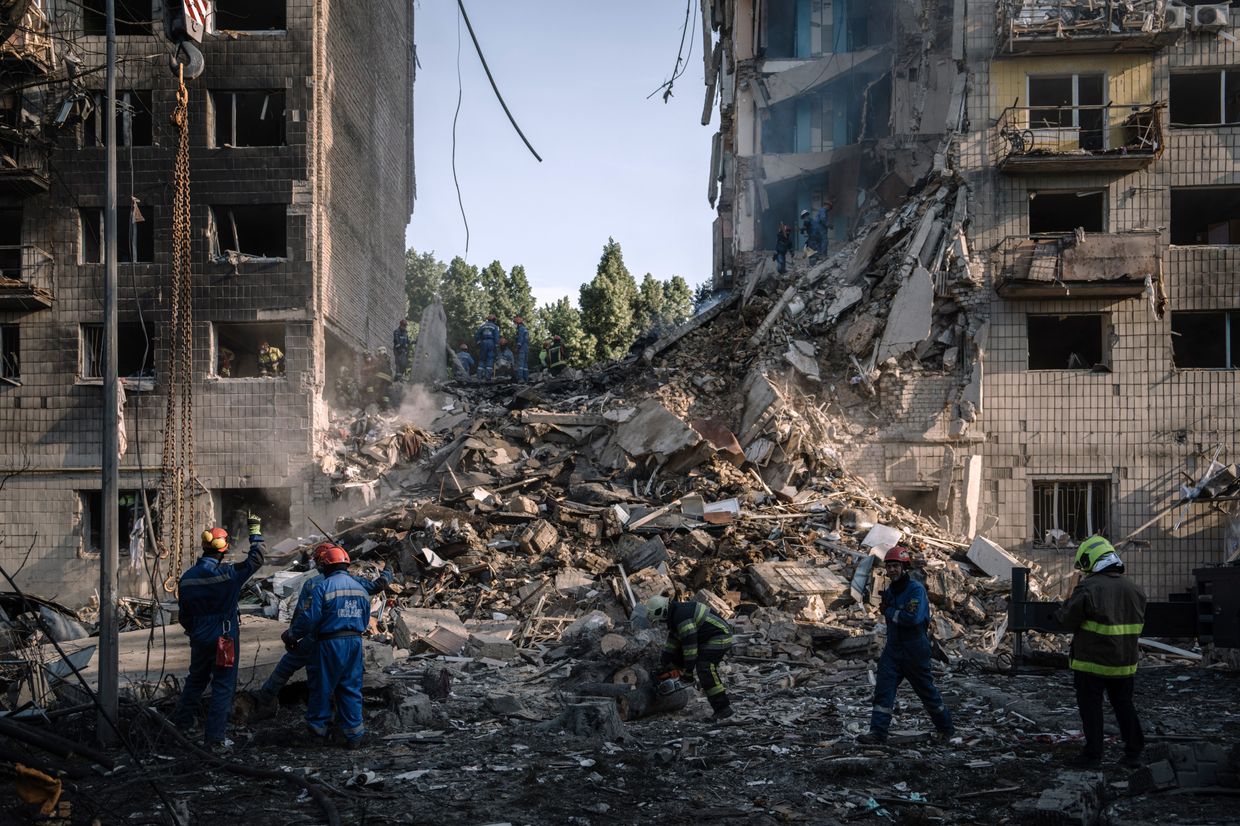When Russia’s Vladimir Putin is in trouble, he threatens to start a global nuclear holocaust.
The Russian president has a long history of nuclear brinksmanship, always implicit in his rhetoric yet never manifesting in reality.
And now, as his war of conquest in Ukraine is failing, Putin is again trying to use the nuclear card against Ukraine and the West – and he is reassuring the world that this is not a bluff.
During his Sept. 30 speech in which he declared the illegal annexation of four Ukrainian oblasts, Putin again said he would employ “all means” available to defend so-called “Russian lands.”
Putin’s pseudo-historic conspiracy theories, defiant tone, and aggressive allusions are trying to send a message: Do not mess with the trigger-happy man with the bomb.
His demand is simple: Kyiv must stop its counteroffensive, and the West must stop supporting Ukraine and reach a deal with the Kremlin.
But how likely is Putin to walk the walk?
Nukes on the battlefield
As Russia’s positions on the battlefield deteriorate, the likelihood of Putin nuking Ukraine depends on the price it would have to pay for its actions, namely if the West confirms its readiness to inflict a devastating response.
“The more confident Putin is that nuclear use will not achieve decisive effects but will draw direct Western conventional military intervention in the conflict, the less likely he is to conduct a nuclear attack,” wrote the U.S. think tank Institute for the Study of War (ISW).
According to a 2022 report by the Federation of American Scientists, Russia remains the world’s leading nuclear power, with a total inventory of 5,977 warheads at its disposal.
But employing its strategic nuclear triad to incite a full-fledged thermonuclear war is the scenario in which the Kremlin is least likely to achieve a guaranteed end.
Concerning Russia’s war in Ukraine, it makes more sense to consider the use of Moscow’s tactical nuclear weapons.
Strategic nuclear weapons have large yields and are intended to inflict devastating damage far from the battlefield on anything from cities to critical infrastructure, thus undermining the target's ability to wage war.
Low-yield tactical nukes are designed to have a less significant impact and to be used on battlefields in military situations. Typically, tactical nuclear weapons include missiles, gravity bombs, artillery shells, or equipped torpedos with the explosive power of a couple of kilotons.
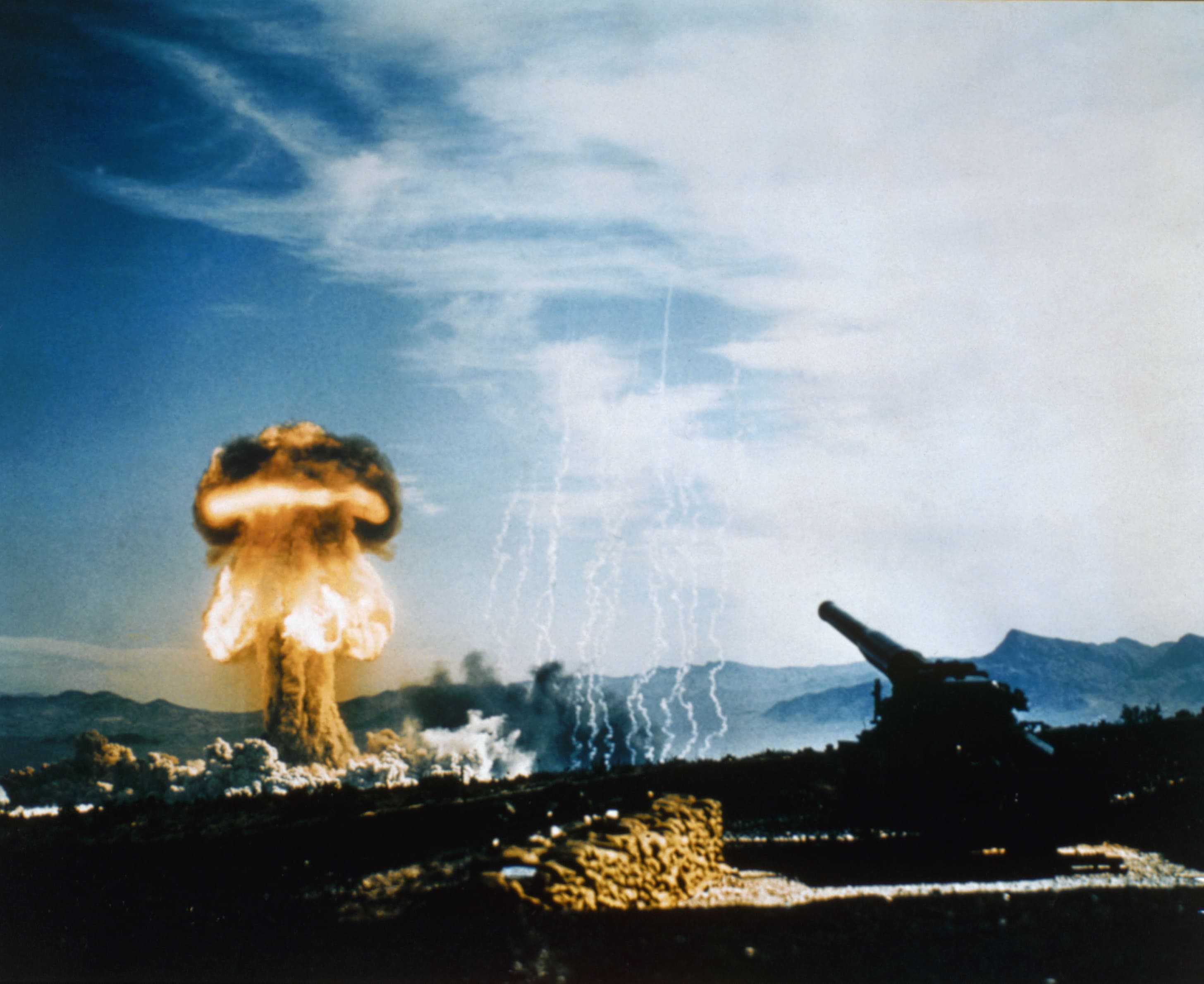
By contrast, the atomic bomb used on Hiroshima in 1945 was around 15 kilotons. The RS-24 Yars, one of Russia’s main strategic intercontinental missiles, can bear warheads with a couple of hundred kilotons each.
Critically, tactical nuclear weapons have never been used in combat.
It’s impossible to say precisely how many tactical warheads Russia currently has in its arsenal. A 2021 U.S. Congressional Research Service study estimated the Russian stockpile at between 1,000 to 2,000 warheads.
Point of no return
Moscow is currently facing the urgent task of trying to stop Ukraine’s counteroffensive, which has already retaken large swathes of the country’s eastern and southern regions.
The Kremlin has tried to rectify the situation in two ways.
The first is the announcement of “partial mobilization” in Russia. However, the conscription of thousands of barely trained, poorly organized, and unmotivated men is unlikely to reinforce Russia’s depleted military units or help Moscow reverse its downward course in 2022 or 2023.
The second is the ongoing pressure on Europe via natural gas supplies. The Kremlin openly pushes the narrative that Europe will freeze to death in winter unless it ceases to support Ukraine’s war effort. Despite this, NATO and most European states continue to provide Ukraine assistance and are actively finding ways to compensate for curtailed Russian gas exports.
Tactical nuclear weapons may be a logical Plan C for Russia.
However, a single tactical nuke will not bring Russia its desired results on the battlefield in Ukraine. Ukraine’s military remains relatively unconcentrated, and one tactical nuke is not going to inflict critical damage on Ukraine’s war effort along the 1,000-some-kilometer front line.
The Kremlin would inevitably have to use multiple strikes to derail Ukrainian offensives.
Even a single nuclear strike would spell the end of the Non-Proliferation Agreement, escalating the war and sparking outrage not only from NATO and the West but also India and China, which have already voiced their dissatisfaction with Russia’s war.

Russia's use of nuclear weapons would also risk direct retaliation by NATO. In a statement on Sept. 25, U.S. National Security Advisor Jake Sullivan warned that Russia would face “catastrophic consequences” in the event of a nuclear strike against Ukraine.
The grave political and military consequences of such a step would greatly outweigh Russia’s potential gains.
Moreover, a swift response from the West following the use of a single tactical nuke would preclude Russia from inflicting subsequent strikes.
The Kremlin may also resort to nuclear terror by targeting strikes at Ukrainian cities or critical infrastructure or undertake demonstration strikes to incite fear.
However, the ISW suggests that “such attacks would be highly unlikely to force Ukraine or the West to surrender.”
The U.S. think tank did note that “there would be tremendous gambles of the sort that Putin has historically refused to take.
"Ukraine’s government and people have repeatedly demonstrated their will to continue fighting. And the West would find it very challenging simply to surrender in the face of such horrific acts because of the precedent such surrender would set.”

In this regard, Western intelligence can monitor Russian nuclear facilities and sound the alarm bells should Russia start to make the necessary preparations. The world will not be unprepared should Russia decide to use tactical nukes in combat and will thus have the opportunity to respond.
The question also arises as to whether Russia’s military in Ukraine is ready to operate in an environment of nuclear warfare.
Conventional warfare has already created grave issues with morale among Russian troops in Ukraine. Such problems have precipitated the phenomenon of “the 500th,” the Russian military members that refuse to participate in hostilities, as well as harsh criminal punishment by the Kremlin for "the refuseniks.”
It is an open quest whether Russia’s unmotivated, barely trained, and coerced military would operate effectively after seeing mushroom clouds on the battlefield. Using low-yield nuclear weapons in combat implies that they will be close to friendly forces.
The rules for the effective use of tactical nuclear weapons mean the blasts would be to create gaps in Ukrainian defenses. And Russian mechanized units would have to immediately rush through those holes deep into the Ukrainian rear, straight through just-targeted areas.
Even in conventional warfare, the Russian military finds itself unable to attack now due to the lack of manpower and organization. In nuclear warfare environment, apart from questionable morale, the Russians would fall short of proper training, equipment, and protection.
In other words, for Putin, going nuclear in Russia’s failing war means creating more irreversible issues with little to no desired effect.
“Putin is attempting to force Kyiv to the negotiating table by annexing Russian-occupied territory and threatening nuclear use,” the ISW said.
"Putin’s call for negotiations and implicit nuclear threats are aimed at both Ukraine and the West; he likely incorrectly assesses that his nuclear brinksmanship will lead the United States and its allies to pressure Ukraine to negotiate.”
_______________________________________________________
Note from the author:
Hello! My name is Illia Ponomarenko, the guy who wrote this piece for you.
I hope you found it useful and interesting. I work day and night to bring you quality stories from Ukraine, where Russia is waging the biggest war in Europe since WWII. My little homeland, Donbas, is now the site of the worst fighting. We are helping to keep the world informed about Russian aggression. But I also need help from every one of you — to support Ukrainian wartime journalism by donating to The Kyiv Independent and becoming our patron.
Together, we can help bring peace to Ukraine.
